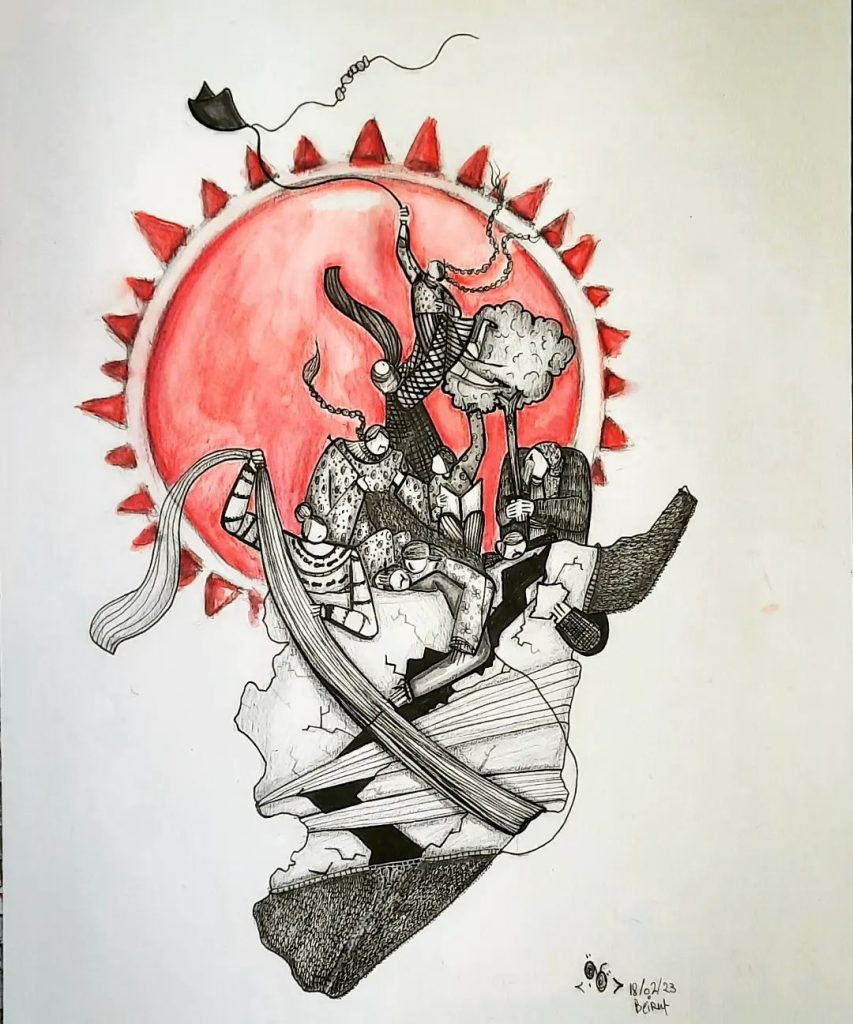The devastating impact on society of the earthquake in Turkey, northeastern Syria and Kurdistan and the difficulties in a quick and effective response by the international community highlights “the need to rethink international and multilateral governance mechanisms to respond to current global challenges” as recognized by the United Nations Secretary-General, António Guterres. “We have failed the people of northwestern Syria. They rightly feel abandoned. They are looking for international aid that has not arrived,” said Martin Griffiths, United Nations Under-Secretary-General for Humanitarian Affairs and Emergency Relief Coordinator.
Especially in the case of Syria and Kurdistan, in the face of these difficulties in mobilizing institutional support and humanitarian aid (1) to the victims of one of the greatest natural disasters in recent years, Syrian civil society has been reaching areas where no state or multilateral or international institutions have gone.
With this article, we seek, especially, to recognize the solidarity of the Syrian diaspora, made up of many people who are victims themselves. Regardless of the sides or positions taken in the armed conflict, important acts of solidarity have been carried out, and humanitarian aid has been sent to the areas most affected by the earthquake (2). This devastating disaster can provide, and has partly provided, an opportunity to join efforts and contribute jointly to the country’s reconstruction and peacebuilding.
The earthquake has left over 40,000 dead in Turkey and more than 5,800 in Syria. In the case of Syria, the tremor has hit communities that have been affected by armed conflict for more than a decade and were already in a situation of crisis and extreme precariousness. Many of the victims are people who had been forcibly displaced within the country or had sought refuge in southern Turkey. The Truth and Justice Charter, which includes ten Syrian victims’ associations, has stated that people who “had not yet recovered from the consequences of arrest, enforced disappearance and displacement” have been affected and have died.
The impact of a natural disaster in a conflict zone leads us to refer to other armed conflicts that were impacted by natural disasters. Paradoxically, these situations can become an opportunity to advance peacebuilding if they are managed correctly or, on the contrary, they can contribute to exacerbating the conflict. In 2004, the Indian Ocean earthquake and subsequent tsunamis killed more than 300,000 people, mainly in Indonesia, Sri Lanka, India and Thailand.
Aceh (Indonesia), the most affected region, had been in a conflict for 30 years, resulting in 12,000 deaths. According to the Elcano Institute, the catastrophe provided new opportunities for peace because “it forced the warring parties in Aceh to do something they had practically never done before to consider, above all, the wellbeing of the region’s civilian population,” prioritizing the arrival of humanitarian aid. As a result, the government and the Free Aceh Movement (GAM) guerrilla group decided to cease hostilities and sat down to negotiate the terms of a lasting peace, which concluded with the signing of a peace agreement in 2005.
However, according to the UB Solidarity Observatory, in the case of Sri Lanka, there were problems with the distribution of humanitarian aid in the area controlled by the Liberation Tigers of Tamil Eelam (LTTE), in a context in which “the conflict was in a ceasefire phase after the agreement reached in February 2002 […] which was beginning to falter.” Despite initially agreeing to a coordinated management of humanitarian aid, fighting and tensions resumed, and peace talks failed in 2006. Although the war ended in 2009 with the military defeat of the Tamil Tigers, the wounds of the conflict are still raw.
These precedents show that, after a natural disaster, it is necessary to focus on the victims and the population and jointly seek options to ensure access to humanitarian aid and the reconstruction of the affected areas. These joint efforts can become windows of opportunity to find common goals, look beyond deep differences and thus contribute to conflict resolution. However, this will not be possible without the will of the various parties to the conflict and international actors to ensure that these changes are lasting and lead to political and social transitions towards peace.
Finally, as we mentioned at the beginning, to help alleviate the suffering in a situation of extreme crisis and at the same time try to move towards conflict transformation and peace, it is essential to recognize the committed and active work done by many people in Syria and Kurdistan, including those in the diaspora. And the international community needs to stand up and do the same.
***
1 The Government of Catalonia, for example, through the Catalan Committee for Emergency Humanitarian Aid, has made two million euros in aid immediately available for the areas affected by the earthquake in Turkey, Syria and Kurdistan.
2 For example, the Kudwa association in Barcelona, a group of Arabic-speaking migrants and refugees working for integration and interculturalism, has organized a collection of in-kind donations and a cultural fundraising event.

